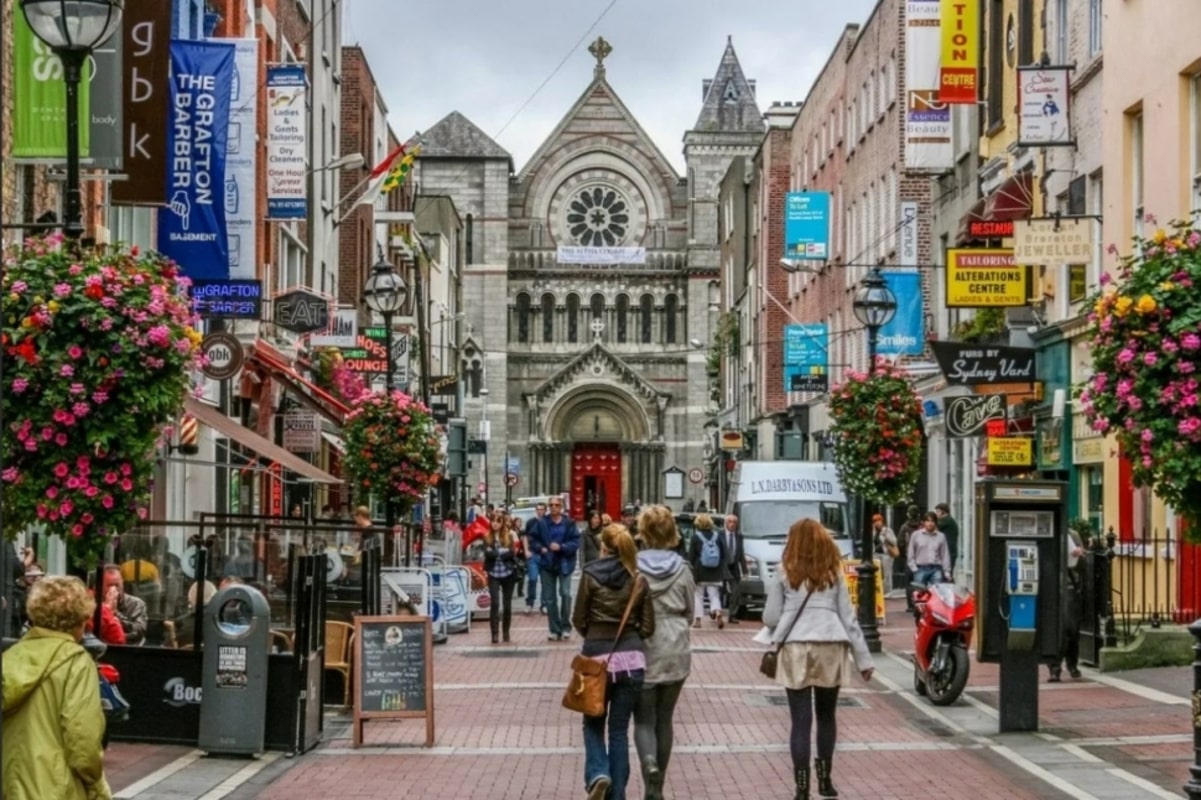Dublin is not just the capital of Ireland, but also a city with a vibrant soul where ancient history meets modern life and culture flourishes in every corner. Walking its streets, you can feel the spirit of Celtic heritage, stumble upon the former homes of great writers, or enjoy a pint of legendary Irish stout in a centuries-old pub. This city constantly surprises visitors with its architecture, its people, and the many myths woven into its identity. These fascinating facts about Dublin will offer you a fresh perspective on one of Europe’s most captivating cities. You may not have known just how many remarkable stories are hidden in Ireland’s capital.
- The name Dublin comes from the Irish term Dubh Linn, which means “black pool.” It referred to a body of water once located near today’s Dublin Castle, formed by the confluence of the Liffey and Poddle rivers. Although the pool is long gone, the name remains. The modern English spelling is “Dublin,” but the original form is still used in Irish.
- Dublin was founded by Vikings in the 9th century. Thanks to its strategic location on the eastern coast of Ireland, it quickly became a major trading hub. Archaeological digs in the Wood Quay area confirm the Viking presence and active commerce in the region. Today, the Dublinia museum showcases the city’s Viking and medieval past.
- Dublin is a city of writers, home to literary giants such as James Joyce, Samuel Beckett, Oscar Wilde, and Jonathan Swift. Literature is not just a tradition here, but a core part of cultural identity. The city hosts the Dublin Writers Centre and the Museum of Literature Ireland (MoLI), both celebrating national literary heritage. In 2010, Dublin was designated a UNESCO City of Literature.
- In the heart of the city stands Trinity College, one of Europe’s oldest universities. It was founded in 1592 by royal charter from Queen Elizabeth I. The college library holds more than six million volumes, including the famous Book of Kells, a masterpiece of medieval manuscript art. Its Long Room is a highlight for visitors from all over the world.
- The River Liffey flows through Dublin, dividing it into northern and southern halves. Numerous bridges cross the river, with the most iconic being the Ha’penny Bridge, once requiring a half-penny toll to cross. Today, it stands as one of the city’s most beloved landmarks. It has maintained its elegant design since 1816.
- Guinness, one of Ireland’s most iconic brands, was founded in Dublin in 1759. The St. James’s Gate Brewery remains one of the largest breweries in the world. At the Guinness Storehouse, visitors can learn about the history of the stout and brewing process, then enjoy a pint with panoramic views of the city. The site attracts over half a million tourists each year.
- Dublin is home to one of Europe’s tallest monuments — The Spire — which reaches a height of 120 meters. Installed in 2003 on the site of the former Nelson’s Pillar, the stainless steel structure is visible from across the city. It represents renewal and the modern identity of the capital. The Spire has become a symbol of contemporary Dublin.
- Phoenix Park is one of the largest urban parks in Europe. Covering more than 700 hectares, it is home to a herd of wild deer that have lived there since the 17th century. The park also houses the residence of the President of Ireland and the Dublin Zoo, one of the oldest zoos in the world. It’s a favorite retreat for locals and tourists alike.
- Dublin has an efficient public bike-sharing system called Dublinbikes, regarded as one of the most successful in Europe. With over 100 stations across the city, it offers a convenient way to get around without a car. The affordable rates and accessibility make it popular with both residents and visitors. This system has contributed to the city’s sustainable and mobile lifestyle.
- Temple Bar, located in the city center, is known for its narrow cobbled streets, pubs, and art galleries. It’s Dublin’s cultural hotspot, hosting concerts, exhibitions, and literary events. Temple Bar has become a symbol of the city’s artistic and bohemian spirit. Artists, musicians, and travelers from around the world gather here.
- Dublin is one of the few cities where official signage appears in both Irish and English. While English dominates daily communication, the Irish language is actively promoted in schools, media, and public life. Several schools in the city conduct instruction in Irish. This effort is part of a broader program to preserve Ireland’s cultural heritage.
- Every year on March 17th, Dublin hosts vibrant celebrations for St. Patrick’s Day — Ireland’s national holiday. The city transforms into a festive sea of green, with parades, concerts, and street parties. The event attracts tourists from across the globe. The joyful atmosphere blends tradition, music, dance, and Irish hospitality.
- The city is home to a wide range of museums, including the National Museum of Ireland, the Museum of Modern Art, and the Natural History Museum. Many offer free admission, making culture accessible to everyone. The archaeological collection is particularly impressive, with artifacts from the Bronze and Iron Ages. These exhibits allow visitors to explore Ireland’s ancient past.
- Dublin has served as the filming location for many popular movies, such as Once, Brooklyn, and Sing Street. The city’s historic buildings, stone-paved streets, and coastal views create a perfect cinematic setting. Dublin also supports the film industry through festivals and educational programs. As a result, it is becoming an increasingly important destination for international filmmakers.
These incredible facts about Dublin show that the city combines deep history, cultural richness, and a modern, dynamic lifestyle. Ireland’s capital impresses with its diversity, warmth, and the vibrant energy that fills every street. You may not have known how many faces Dublin has, each worth discovering. It’s a city easy to fall in love with — and hard to forget.





